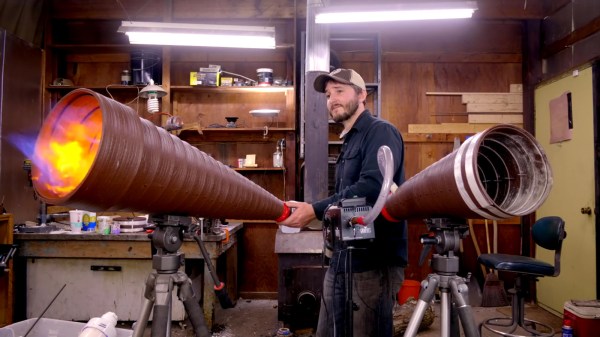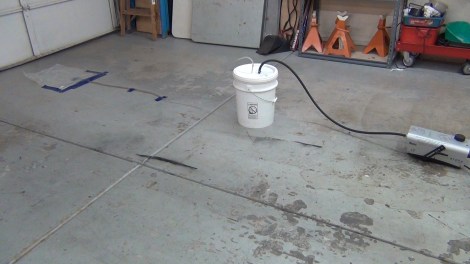Every wanted a mini wind tunnel to check the aerodynamics of scale model cars, drones, or other small objects? Then check out [dannyesp]’s mostly-3D-printed DIY wind tunnel (video, embedded below). Don’t forget to also browse the additional photos in this Reddit thread.

There’s not much for plans available, since as [dannyesp] admits, this device was very much the product of trial-and-error and junk bin parts. The video and photos are more than enough for any enterprising hacker to work with.
The core of the device is a large fan made from a junked drone motor. This fan is located at the rear of the tunnel. A small anemometer is placed at the front, where some 3D-printed baffles also work to smooth out turbulent incoming air.
The foggy trails of vapor come from a hacked-up vape pen. Vapor gets piped through some tubing to the front of the tunnel. There, the vapor trails are drawn towards the low-pressure area at the rear, traveling over and around the object on the way. [dannyesp] also mentions that the platform holding the object is mounted on a rail, which incorporates some kind of pressure sensor in an attempt to quantify wind drag.
We want to take a moment to appreciate just how clean this “junk parts” project looks — even though it is made from things like broken photo frames. All of this comes down to thoughtful assembly. A hack doesn’t have to look like a hack job, after all. We also love the little control box that, instead of having a separate power indicator, lights up like a little nightlight when it has power.
Hacking vaporizers is a fantastic way to create a small, portable fog machine. These can create fantastic costume effects like this smoking Ghost Rider skull. They are a great way to turn an off-the-shelf consumer item into something that cost quite a bit more just a few years back.
Continue reading “Vapor Trails And Fan Make For Fantastic Photos In DIY Wind Tunnel”
















